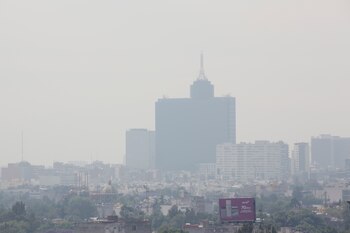
New Delhi and Bangladesh once again topped the list of capitals and countries with the worst air quality in 2021, according to the latest annual air pollution report published by Switzerland's IQAir, a position they have not abandoned in the last four years, amid little progress.
” Bangladesh and India mainly have emissions from vehicles, industrial waste, power generation and also congestion of biomass that is often used for cooking. Along with construction and agricultural burning, this combination of sources really leads to large amounts of air pollution,” IQAir North America Executive Director Glory Dolphin told Efe.
This problem, which has led both Bangladesh and the capital of India to become since 2018 - the year when registrations began - the most polluted country and capital, does not seem to have a solution in the short term, with recent progress mainly motivated by the restrictions of the pandemic, rather than by serious environmental policies.
On the positive side, the places with the least pollution, according to the ranking, were New Chalcedony and its capital Noumea.
NO PROGRESS PLAN IN NEW DELHI
New Delhi was once again in 2021 the capital where its citizens breathed the worst air in the world, after registering an average of 85 μg/m3 of PM2.5 particles - the most harmful to human health - despite the restrictions on movement imposed throughout the year to combat covid-19.
A figure that represents a slight increase compared to 2020, when the total confinement that India experienced placed New Delhi's air quality at 84.1 μg/m3 of PM2.5 particles, the lowest value in the last four years.
Before the outbreak of the coronavirus crisis, these records were much higher, amounting in 2018 to 113.5 μg/m3 PM2.5 and in 2019 to 98.6 μg/m3 PM2.5.
Contrary to India's expectations, the National Clean Air Programme (NCAP) approved in 2019 to combat this problem throughout the country had little to do with this improvement, Greenpeace India's Campaign Manager Avinash Chanchal assured Efe, who attributed the decline in pollution to “periodic lockdowns and localized restrictions”.
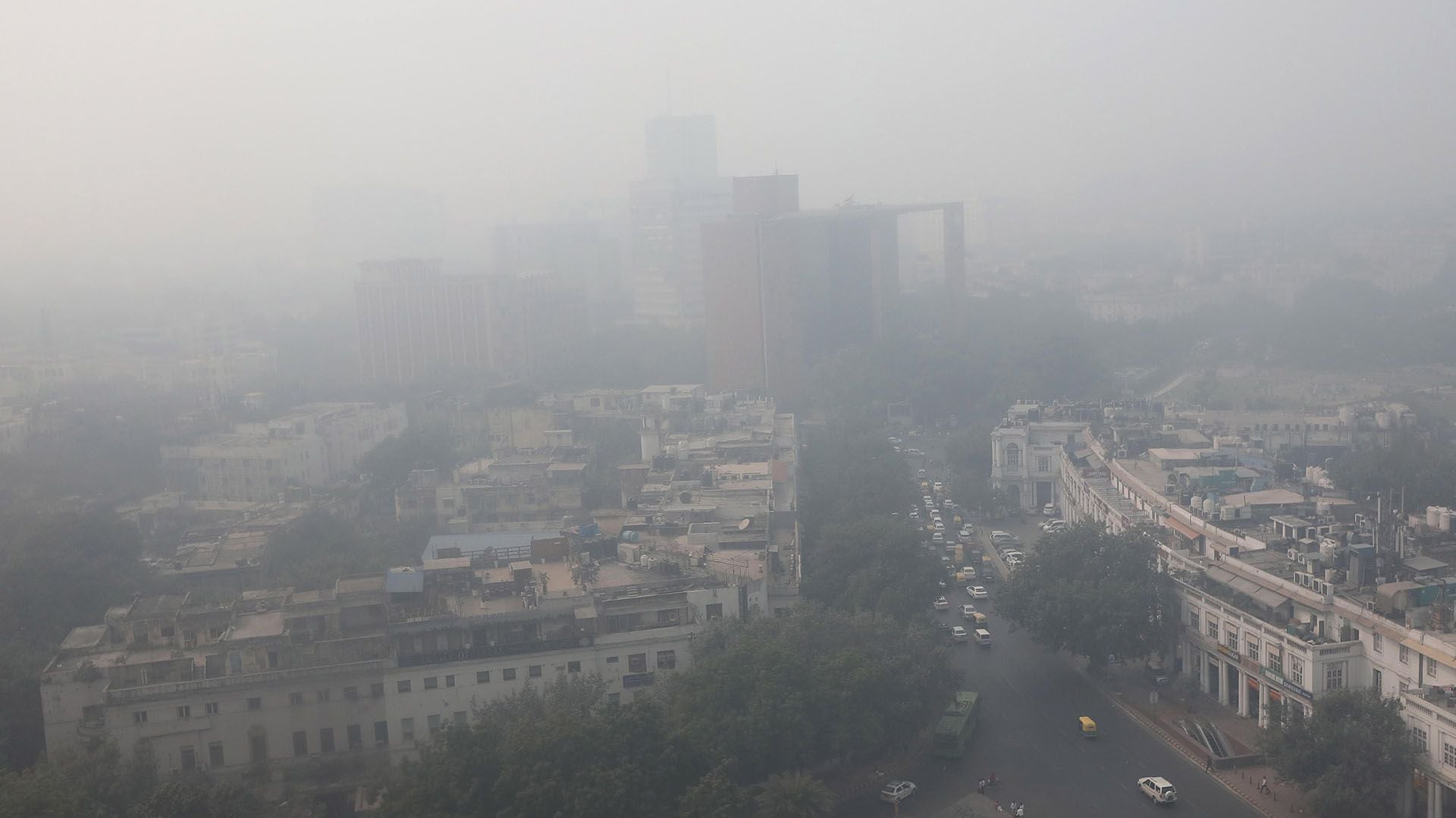
Chanchal said that this plan, a pioneer in the Asian country, only achieved “slow progress” in environmental matters, in the face of the Indian authorities' neglect to “implement all the activities envisaged” in it.
The report itself notes that “there is very little information” about these activities, “which makes it difficult to reflect public dissatisfaction with the slow progress of the programme”, and warns that between 20 and 35 per cent of India's pollution comes from the combustion of the engines of its fleet of vehicles.
Air pollution is a serious problem beyond New Delhi, since 48% of Indian cities recorded a PM2.5 concentration in 2021 higher than 50 μg/m3, a figure ten times higher than the standards recommended by the World Health Organization (WHO).
” A HUMANITARIAN CATASTROPHE” IN BANGLADESH
Neighbouring Bangladesh continued to lead the list of countries with the worst air quality in 2021 weighed down by the 76.9 μg/m3 PM2.5 particles it recorded on average in all its cities.
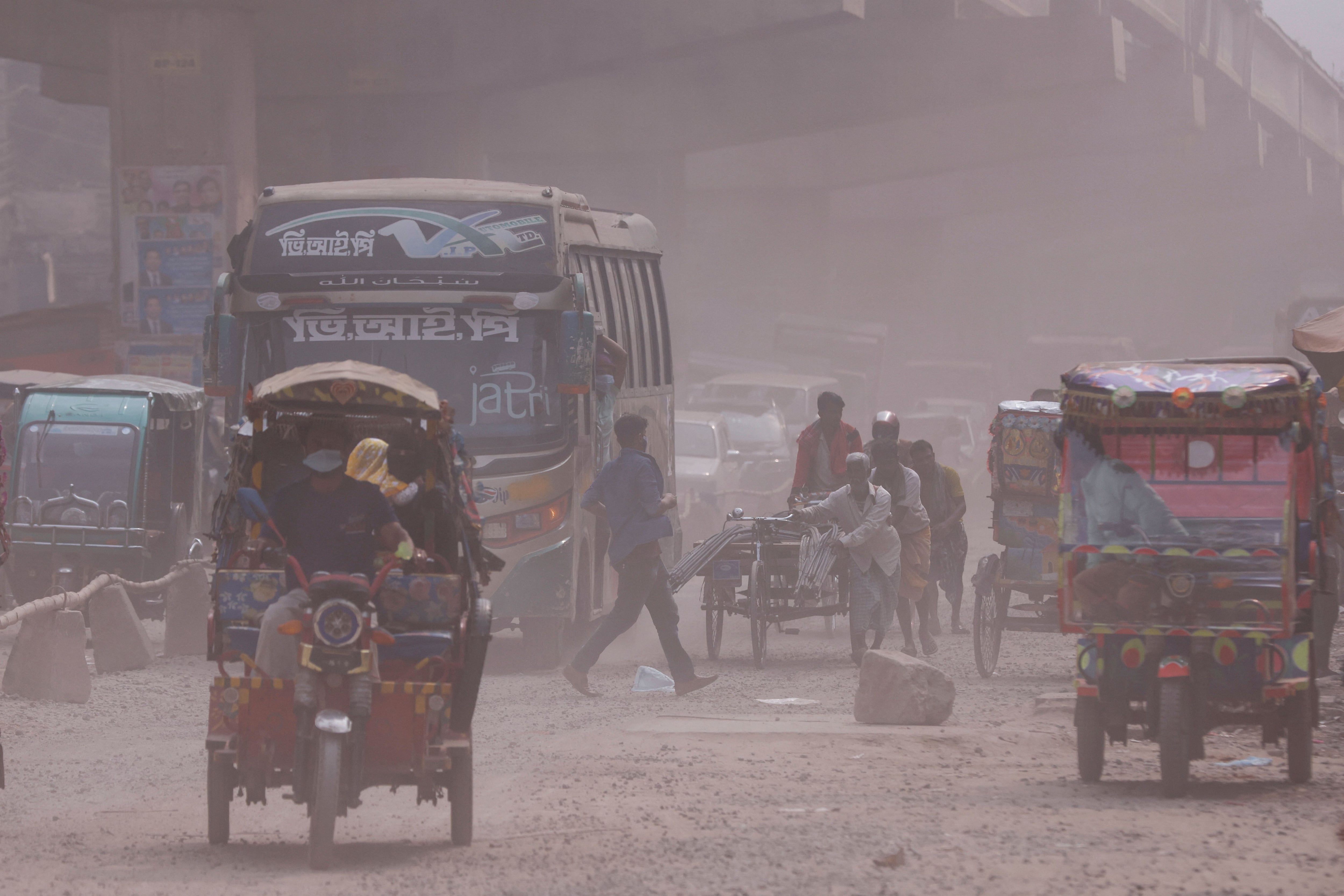
A slight progress compared to last year, when the average was 77.1 μg/m3 PM2.5, but more positive when compared to the pre-pandemic records, which amounted to 97.1 μg/m3 PM2.5 in 2018 and 83.3 μg/m3 PM2.5 the following year.
In addition to the reduction in mobility caused by the health crisis, Ahmad Kamruzzaman, president of the Department of Environmental Sciences at Stamford University in Dhaka, explained to Efe that “the ban on two-stroke engines and illegal brick kilns” may have contributed to this decline.
However, he pointed out that there are two other obstacles that are more complicated for the country to overcome, such as “meteorology and the gap in urban planning”, which, by reducing air flow, do not allow the wind to dissipate pollutants from cities.
In this regard, the general secretary of the Bangladesh Environment Movement, Sharif Jamil, criticized the political class for ignoring “the consequences of environmental pollution” in a country as densely populated as his own, which could cause “a humanitarian catastrophe.”
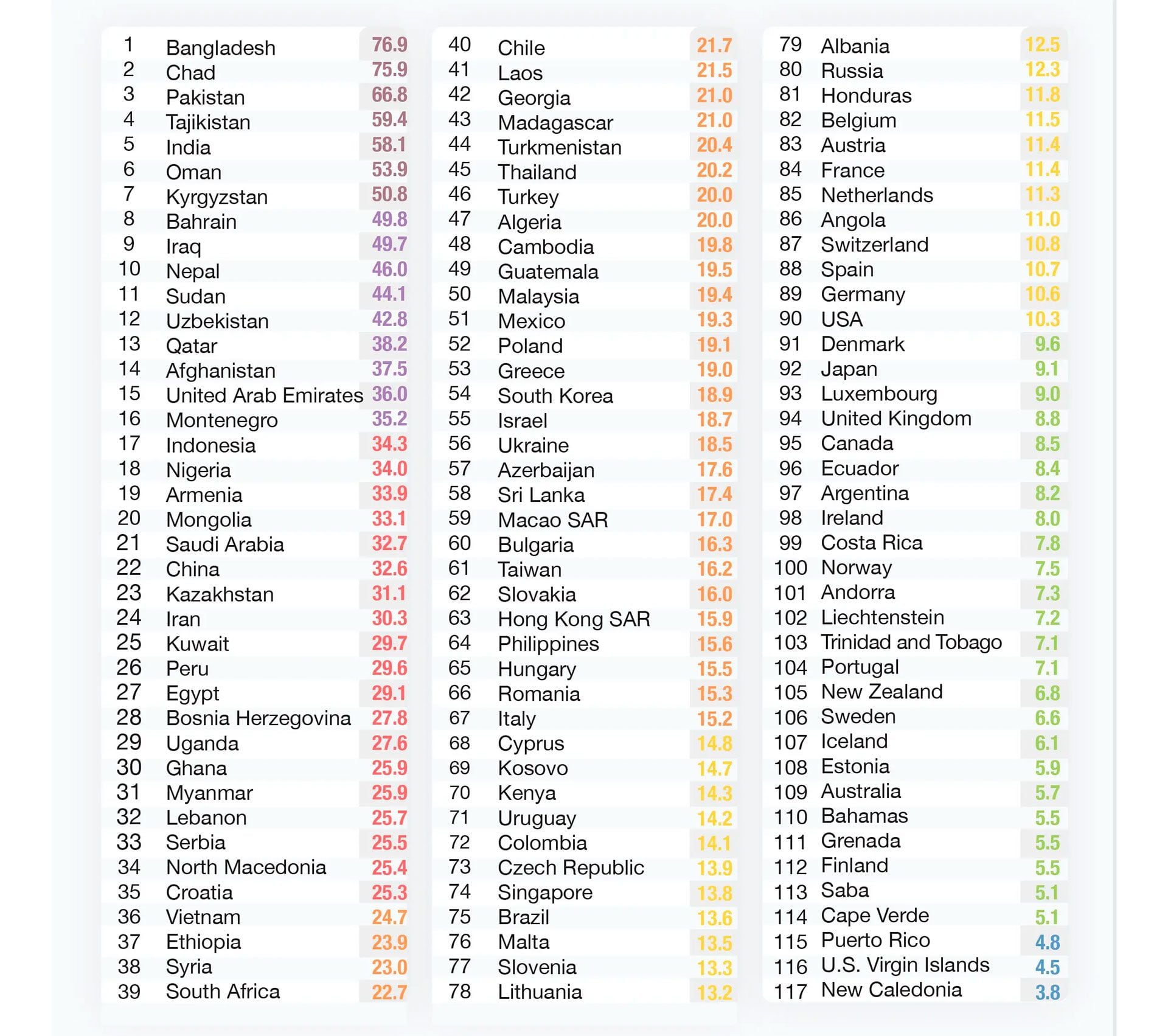
“We are heading towards irreparable damage. You can't clean the air if you run a coal-fired power station. (...) You must take these problems into account and make an integrated plan,” Jamil said.
LATIN AMERICA'S POSITION
Latin America and the Caribbean have faced several air quality challenges as regional cities grow and urban populations expand. Urban population growth is a multifaceted air quality problem; as demand for energy and transportation increases, so do PM2.5 emissions.
Increases in fossil fuel-generated energy production, vehicle exhaust from obsolete vehicle fleets, the increasing use of solid-state fuels as a heat source in low-income cities, and the absence of government regulation on air quality all contribute to poor air quality. Despite all this, the Latin American and Caribbean region has made some progress in 2021. Country-level PM2.5 concentrations fell in four countries in the region; Argentina, Brazil, Colombia and Costa Rica.
While some progress has been made, improvements in air quality that correlate with mandatory pandemic quarantines have shown signs of erosion in 2021 with Peru, Chile and Ecuador now close to meeting or even exceeding 2019 PM2.5 levels.

Steady increases in the use of wood burning for heating and cooking in low-income regional cities, combined with lower precipitation rates, in addition to post-quarantine economic mobilization, have contributed to this year's increase.
Of the 174 regional cities that contributed data to this report, only 12 cities, representing only 2% of the regional population, met the 2021 WHO air quality guidelines for PM2.5
In 2021, the number of air quality monitoring stations in this region increased by more than 50% compared to 2020, with real-time air quality data now available for 24 other cities. The countries of Chile, Colombia and Mexico had the greatest progress in air quality monitoring with a 51%, 38% and 28% increase in the number of monitoring stations, respectively. Citizens of this region play an active role in monitoring air quality.
Local organizations and individuals now operate 55% of the region's monitoring stations, highlighting the effectiveness of community efforts by citizen scientists to take the lead in expanding air quality networks. One such group is the Aires Nuevos Citizens Network for Air Quality for Early Childhood in Latin America, which operates numerous air quality monitoring stations in eight Latin American countries; Argentina, Brazil, Chile, Colombia, Ecuador, Mexico, Peru and Uruguay. [67]
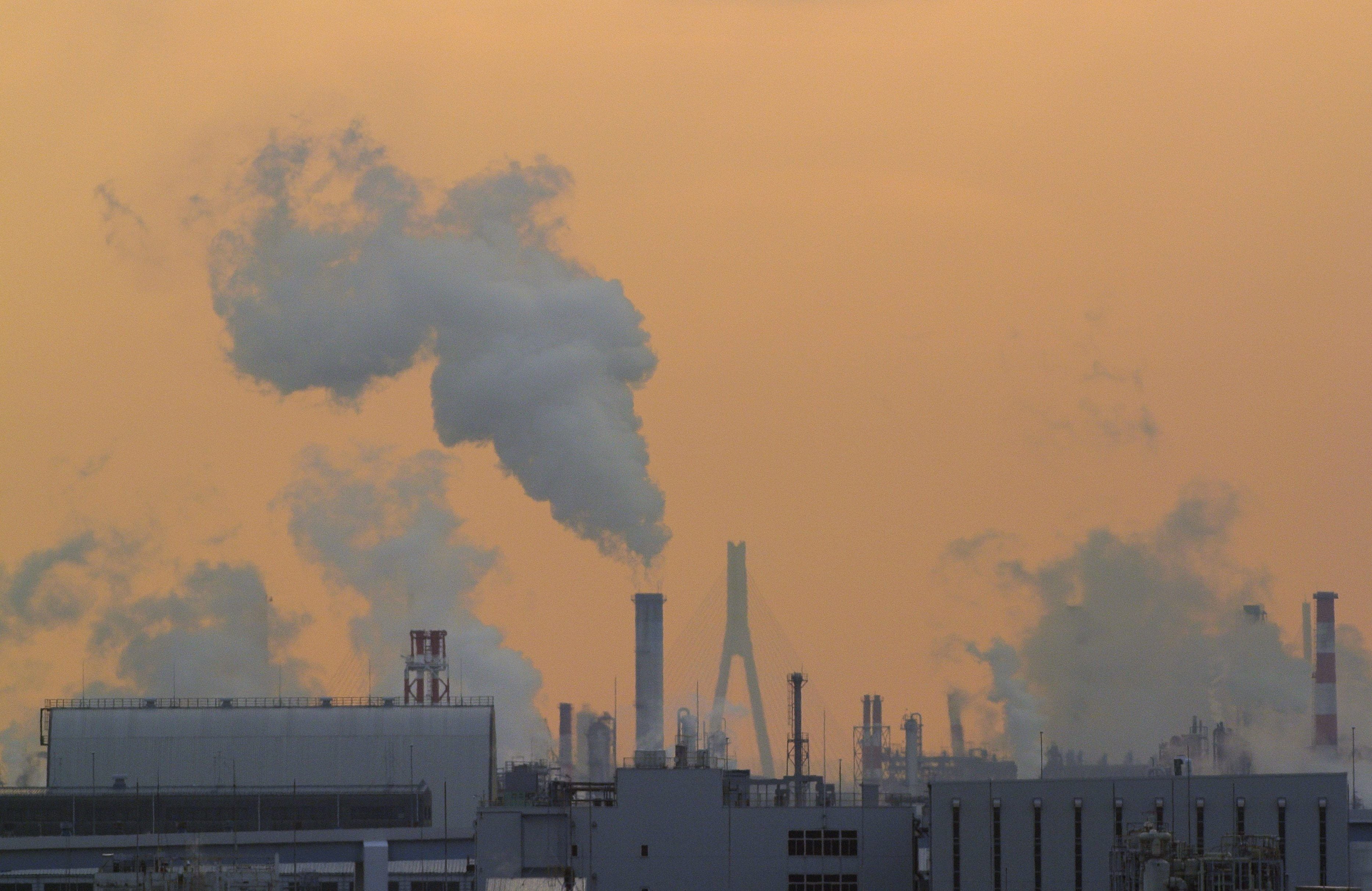
Despite these achievements, much work remains to be done before environmental air quality monitoring in this region reaches other regions of the world.
PESSIMISTIC CONCLUSIONS
The 2021 Global Air Quality Report revealed that only 3% of cities — 222 of the 6,475 analyzed — met the latest annual air quality guidelines of PM2.5 established by WHO, which recommends not exceeding 5 μg/m3. No country met these expectations.
According to WHO, air pollution causes nearly four million deaths annually worldwide.
(with information from EFE)
KEEP READING:
Últimas Noticias
Debanhi Escobar: they secured the motel where she was found lifeless in a cistern
Members of the Specialized Prosecutor's Office in Nuevo León secured the Nueva Castilla Motel as part of the investigations into the case

The oldest person in the world died at the age of 119
Kane Tanaka lived in Japan. She was born six months earlier than George Orwell, the same year that the Wright brothers first flew, and Marie Curie became the first woman to win a Nobel Prize

Macabre find in CDMX: they left a body bagged and tied in a taxi
The body was left in the back seats of the car. It was covered with black bags and tied with industrial tape
The eagles of America will face Manchester City in a duel of legends. Here are the details
The top Mexican football champion will play a match with Pep Guardiola's squad in the Lone Star Cup

Why is it good to bring dogs out to know the world when they are puppies
A so-called protection against the spread of diseases threatens the integral development of dogs




